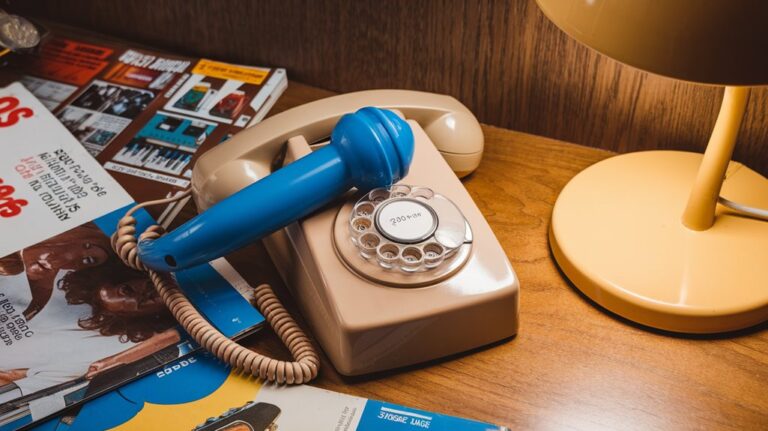Arthur Fry’s Gospel Bookmark That Led to Post-it Global Domination
Picture yourself fumbling with paper bookmarks that keep sliding out of your hymnal during Sunday choir practice. That's exactly what Arthur Fry faced in 1974, and it drove him crazy enough to spark one of the most transformative office innovations of the 20th century. You've probably got a stack of Post-it Notes on your desk right now, but you might not realize that this ubiquitous tool started with a frustrated church choir singer and a supposedly useless adhesive. Let's explore how this sticky situation unfolded.
The Choir Singer's Frustration: A Problem Worth Solving

While singing in his church choir, Arthur Fry faced a persistent challenge that would eventually lead to one of the world's most ubiquitous office supplies.
During Wednesday night practices and Sunday services, he'd struggle to keep track of multiple hymns using paper bookmarks that constantly fell out of his hymnal. These choir challenges disrupted his performances and created mounting frustration.
As he dealt with lost pages and scattered paper scraps, Fry envisioned a better bookmark solution: one that would stick to the paper yet remove easily without causing damage. His inspiration came from remembering Dr. Silver's seminars about a unique reusable adhesive.
He needed something thin enough to avoid bulking up the hymnal, but visible enough to quickly locate during services. It was this simple need that sparked his innovative thinking, pushing him to apply his professional expertise at 3M to solve this everyday problem. This breakthrough moment came to him in 1974 during choir practice, forever changing the landscape of office supplies.
A Serendipitous Connection With Spencer Silver's "Failed" Adhesive
The solution to Fry's hymnal troubles had already been invented – it just hadn't found its purpose yet.
In 1974, a serendipitous discovery occurred when Fry attended one of Spencer Silver's seminars at 3M, where he learned about a unique adhesive innovation that had been sitting unused for years.
Silver's creation was remarkable: tiny acrylic spheres that could stick papers together without tearing them, leave no residue, and maintain their effectiveness through multiple uses. Much like the discovery of new species that validate cryptozoological claims, this adhesive represented a breakthrough waiting to be properly recognized.
Though originally developed for aircraft construction in 1968, this "low-tack" adhesive had failed to find its intended purpose.
Despite Silver's persistent efforts to promote his invention through presentations and seminars, it remained an unused solution waiting for the right problem.
When Fry encountered it, he immediately saw its potential to solve his choir bookmark dilemma. As a product development specialist, Fry had the technical expertise to recognize and develop the adhesive's practical applications.
From Church Hymnal to Office Revolution
Frustration sparked innovation when Arthur Fry applied Silver's microsphere adhesive to his choir bookmark problem. His hymnal innovation solved more than just keeping track of songs – it opened doors to entirely new adhesive applications in the workplace. A chemical engineer by education, Fry's problem-solving mindset was evident from his earliest days at 3M. Like the creative analyses in Monstrosity, Identity and Music, his solution transcended its original purpose.
You might wonder how a church choir solution transformed into an office sensation. As Fry began using his prototype bookmarks to exchange notes with his supervisor, colleagues quickly caught on to their potential. Soon, they were writing messages on these sticky notes, creating an entirely new way to communicate.
The product's journey to market wasn't instant success. After mixed results as "Press 'n Peel," 3M's "Boise Blitz" campaign proved its worth, with 94% of testers wanting to buy it.
In 1980, rebranded as "Post-it Notes," the product revolutionized office communication forever.
Basement Tinkering to Manufacturing Success
Moving from office trials to actual production required intense hands-on innovation. The prototype evolution began when Fry set up a workshop in his basement, where he'd spend months crafting a pad-making machine.
You'll appreciate the irony that his creation grew too large to fit through the door, forcing him to knock down a basement wall to transport it to 3M.
The workshop innovation faced significant hurdles at the manufacturing level. 3M's engineers were used to working with adhesive rolls, not pads, and initially resisted the new format. As a chemical engineer, Art Fry was uniquely positioned to understand both the technical and practical aspects of the development process.
It took five years to perfect the specifications and design proper manufacturing equipment. Despite management's concerns about the product appearing wasteful, Fry's persistence paid off.
The shift from basement experiment to nationwide product launch in 1980 marked a turning point in office supply history.
The Yellow Revolution: How Post-its Changed Office Culture Forever

Since their nationwide launch in 1980, Post-it Notes transformed office communication in ways nobody could have predicted.
You'll find their impact on visual communication evident across every Fortune 500 company, with even CEOs like Lee Iacocca singing their praises. These sticky notes became essential for task management, revolutionizing how teams organize and prioritize their work.
The humble yellow square's versatility changed workplace dynamics through:
- Simplified brainstorming sessions and idea sharing
- Enhanced memory retention through colorful visual cues
- Streamlined organization with color-coding systems










